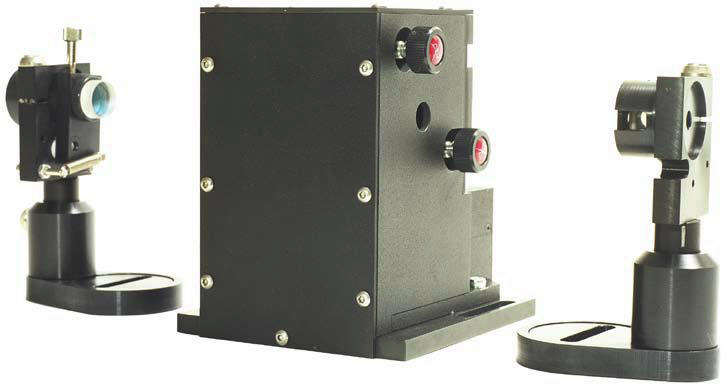
request a quote
Del Mar Photonics - Newsletter Fall 2010 - Newsletter Winter 2010
Featured inquiry from Georgia Institute of Technology for Pismo Pulse Picker:
My work in the group deals primarily with characterization and implementation of materials with large, ultrafast nonlinearities for photonic applications. These materials are typically organic in nature and have the potential to be used for optical phase conjugation, all-optical switching, and optical power limiting.
Question: I saw your Q&A for thinning out a 1 kHz pulse train to the desired frequency in a range of 0Hz 1kHz using the external trigger. Does this mean that the output TTL signal from the sync delay generator of our regen will be sufficient for triggering the modulator?
Answer:
Yes. The main thing is that the TTL signal should lead the optical pulse by
>200 ns (this is the response time of the Pockels Cell) and was rigidly
synchronized to the optical pulse train (jitter less than +/-200 ps).
Question:
Our acquisition system will need to be synchronized to the output repetition
rate. I assume this can be done via one of the various output delay channels.
Answer: Yes, you will be able to use one of the output channels with adjustable
delay. There are 4 total independent output channels like this for synching
external equipment to the unit.
Question:
Although I would imagine this application is quite simple for the pulse picker,
our difficulty comes with the spectral coverage we may require. We will
primarily be working in the NIR (1000 - 1600 nm), however we may also
occasionally operate in the 700 - 1000 nm range as well. Do we need a set of
crystals to properly operate over this entire region? Will the control
electronics be different?
Answer: The unit will have a single control and power supply case but two separate
Pockels cells with respective HV generators (built-in). Please find the specs
below:
Pismo 10/1-8/1-RTP complete pulse picker system with two Pockels cells
request a quote
The system includes control, synchronization and power supply electronics, two
Pockels cells and necessary accessories (see below)
Pockels cell OG10/1 with integrated HV generator
Crystal: DKDP, 12x12x22 mm3, ARC 700-1000 nm (clear aperture 10 mm), other
apertures on request
HV pulse amplitude: up to 10kV (HV pulse has the amplitude ~10kV with duration
10 ns at level 10% of maximum)
Repetition rate: 0 1 kHz (external or internal trigger)
Optical source rep.rate: 20-100 MHz
Optical synchronization input: optical (internal fiber coupled photodetector
with 1.5 m length fiber)
System transmission: >80% @ 700-1000 nm
Optical scheme: lambda/2
Contrast ratio: >1:1000
Also included:
Two polarizers with mounts
1.5-meter optical fiber for synchronization
Pockels cell OG8/1-RTP with integrated HV generator
Crystal: RTP, 6x6x10 mm3, ARC 1500-1600 nm (clear aperture 5 mm)
HV pulse amplitude: up to 8 kV (HV pulse has the amplitude ~8kV with duration 10
ns at level 10% of maximum)
Repetition rate: 0 1 kHz (external or internal trigger)
Optical source rep.rate: 20-100 MHz
Optical synchronization input: optical (internal fiber coupled photodetector
with 1.5 m length fiber)
System transmission: >80% @ 1000-1600 nm
Optical scheme: lambda/2
Contrast ratio: >1:1000
Also included:
Two polarizers with mounts
1.5-meter optical fiber for synchronization
The control system has USB interface and LabView-compatible software, as well as
easy stand-alone controls.
Additional featured inquiry:
Pismo pulse picker for laser wavelength: 1025~1045 nm
Pismo Pulse Pickers brochure - Pismo 8-1-1 manual - Del Mar Photonics
